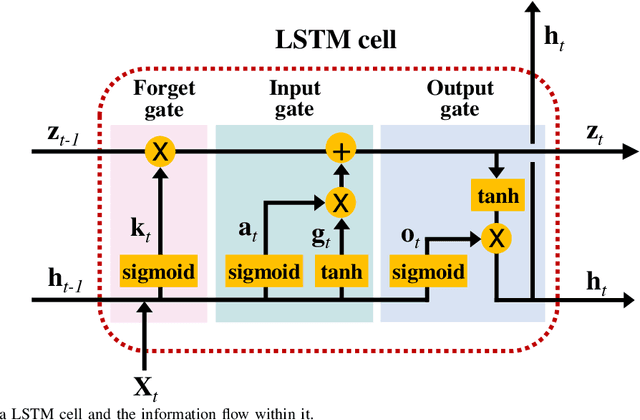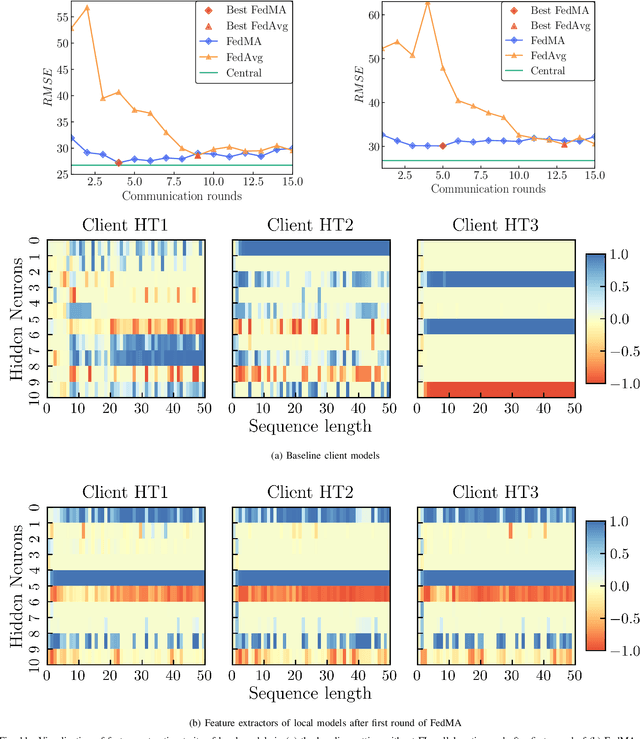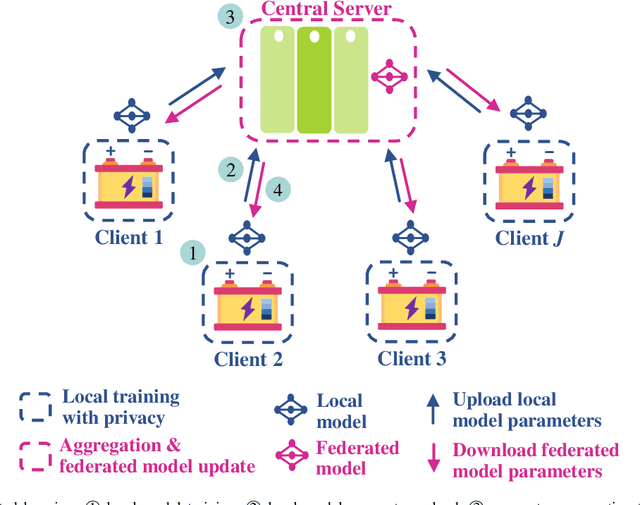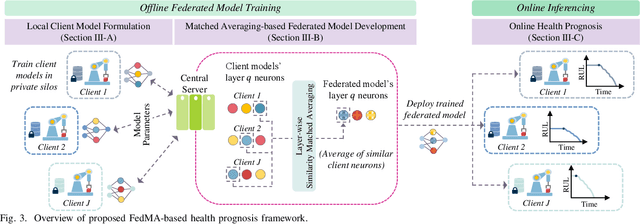Anushiya Arunan
A Change Point Detection Integrated Remaining Useful Life Estimation Model under Variable Operating Conditions
Jan 09, 2024Abstract:By informing the onset of the degradation process, health status evaluation serves as a significant preliminary step for reliable remaining useful life (RUL) estimation of complex equipment. This paper proposes a novel temporal dynamics learning-based model for detecting change points of individual devices, even under variable operating conditions, and utilises the learnt change points to improve the RUL estimation accuracy. During offline model development, the multivariate sensor data are decomposed to learn fused temporal correlation features that are generalisable and representative of normal operation dynamics across multiple operating conditions. Monitoring statistics and control limit thresholds for normal behaviour are dynamically constructed from these learnt temporal features for the unsupervised detection of device-level change points. The detected change points then inform the degradation data labelling for training a long short-term memory (LSTM)-based RUL estimation model. During online monitoring, the temporal correlation dynamics of a query device is monitored for breach of the control limit derived in offline training. If a change point is detected, the device's RUL is estimated with the well-trained offline model for early preventive action. Using C-MAPSS turbofan engines as the case study, the proposed method improved the accuracy by 5.6\% and 7.5\% for two scenarios with six operating conditions, when compared to existing LSTM-based RUL estimation models that do not consider heterogeneous change points.
A Federated Learning-based Industrial Health Prognostics for Heterogeneous Edge Devices using Matched Feature Extraction
May 18, 2023



Abstract:Data-driven industrial health prognostics require rich training data to develop accurate and reliable predictive models. However, stringent data privacy laws and the abundance of edge industrial data necessitate decentralized data utilization. Thus, the industrial health prognostics field is well suited to significantly benefit from federated learning (FL), a decentralized and privacy-preserving learning technique. However, FL-based health prognostics tasks have hardly been investigated due to the complexities of meaningfully aggregating model parameters trained from heterogeneous data to form a high performing federated model. Specifically, data heterogeneity among edge devices, stemming from dissimilar degradation mechanisms and unequal dataset sizes, poses a critical statistical challenge for developing accurate federated models. We propose a pioneering FL-based health prognostic model with a feature similarity-matched parameter aggregation algorithm to discriminatingly learn from heterogeneous edge data. The algorithm searches across the heterogeneous locally trained models and matches neurons with probabilistically similar feature extraction functions first, before selectively averaging them to form the federated model parameters. As the algorithm only averages similar neurons, as opposed to conventional naive averaging of coordinate-wise neurons, the distinct feature extractors of local models are carried over with less dilution to the resultant federated model. Using both cyclic degradation data of Li-ion batteries and non-cyclic data of turbofan engines, we demonstrate that the proposed method yields accuracy improvements as high as 44.5\% and 39.3\% for state-of-health estimation and remaining useful life estimation, respectively.
* 17 pages, 11 figures, and 6 tables
Digital Twin for Real-time Li-ion Battery State of Health Estimation with Partially Discharged Cycling Data
Dec 09, 2022



Abstract:To meet the fairly high safety and reliability requirements in practice, the state of health (SOH) estimation of Lithium-ion batteries (LIBs), which has a close relationship with the degradation performance, has been extensively studied with the widespread applications of various electronics. The conventional SOH estimation approaches with digital twin are end-of-cycle estimation that require the completion of a full charge/discharge cycle to observe the maximum available capacity. However, under dynamic operating conditions with partially discharged data, it is impossible to sense accurate real-time SOH estimation for LIBs. To bridge this research gap, we put forward a digital twin framework to gain the capability of sensing the battery's SOH on the fly, updating the physical battery model. The proposed digital twin solution consists of three core components to enable real-time SOH estimation without requiring a complete discharge. First, to handle the variable training cycling data, the energy discrepancy-aware cycling synchronization is proposed to align cycling data with guaranteeing the same data structure. Second, to explore the temporal importance of different training sampling times, a time-attention SOH estimation model is developed with data encoding to capture the degradation behavior over cycles, excluding adverse influences of unimportant samples. Finally, for online implementation, a similarity analysis-based data reconstruction has been put forward to provide real-time SOH estimation without requiring a full discharge cycle. Through a series of results conducted on a widely used benchmark, the proposed method yields the real-time SOH estimation with errors less than 1% for most sampling times in ongoing cycles.
 Add to Chrome
Add to Chrome Add to Firefox
Add to Firefox Add to Edge
Add to Edge